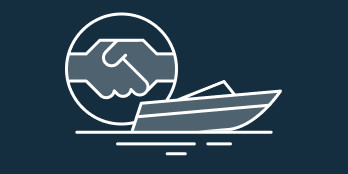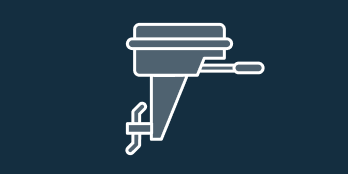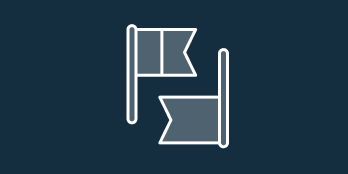Division 240 Sécurité des navires de plaisance
Information sur la réglementation française
La Division 240, qu’est-ce que c’est ?Vous avez peut-être croisé son nom lors de l’apprentissage du code, pour l’obtention de votre permis mer. En France, la Division 240 est un texte réglementaire relatif aux navires et embarcations de plaisance d’une longueur inférieure ou égale à 24 mètres. Il définit le matériel d’armement et de sécurité obligatoire à détenir à bord.
Qui est concerné ?
Propriétaires ou locataires, tous les chefs de bord de bateaux français de cette taille sont concernés, qu’ils agissent à usage personnel ou de formation. Les bateaux qui ne battent pas pavillon français,
mais dont le propriétaire réside fiscalement ou possède un siège social en France, doivent aussi s’y référer.
Pourquoi cette division 240 ?
La Division 240 est conçue pour assurer, autant que possible, la sécurité des membres d’équipage à bord d’un bateau de plaisance en navigation.
Comment ?
Le texte établit une liste d’équipements obligatoires et recommandés et impose la quantité d’éléments à détenir à bord, en fonction du nombre de personnes embarquées, du type de navire et de la zone de navigation choisie. Certains équipements doivent être conformes à une norme, présenter un marquage attestant d’un certain niveau de qualité, ou justifier d’une date de péremption non dépassée.
Où ?
Le texte part du principe que plus le programme de navigation est éloigné de la côte, plus la navigation peut s’avérer dangereuse. Aussi, la liste du matériel d’armement et de sécurité obligatoire diffère en fonction de la zone de navigation envisagée, et s’étoffe à mesure que l’on s’éloigne d’un abri. On distingue quatre zones :
- Basique, jusqu’à 2 milles nautiques (mn) d’un abri
- Côtière, de 2 à 6 mn d’un abri
- Semi-hauturière, entre 6 et 60 mn d’un abri
- Hauturière, de 60 mn d’un abri au grand large
La réglementation concerne aussi les petites embarcations telles que les annexes. La règle est
spécifique à leur sujet : elle indique que le plaisancier ne peut pas, avec elle, s’éloigner à plus de 300 mètres d’un abri. Une seule exception pour naviguer à leur bord à plus de 300 mètres de la côte : être dans un rayon de 300 mètres autour du navire porteur, représentant alors un abri. Le plaisancier doit dans ce cas détenir le matériel de sécurité adapté à bord pour être en règle.
Quand ?
Le navigateur est toujours tenu de se soumettre à la réglementation. Le non-respect de la Division
240 constitue une infraction et peut entraîner des sanctions.
Le matériel de sécurité obligatoire et recommandé, décrypté
Équipement individuel de flottabilité (EIF)
C’est celui qui doit faire flotter l’homme à la mer ! Il peut s’agir d’une combinaison de protection,
d’un gilet de sauvetage en mousse ou gonflable, à déclenchement manuel ou automatique. Il doit
respecter une norme, et sa typologie et sa flottabilité doivent être adaptées à l’utilisateur et à la zone de navigation. Un EIF doit être prévu pour chaque membre d’équipage sur le bateau mais aussi en annexe, à plus de 300 mètres d’un abri.
Dispositif lumineux
C’est l’équipement de sécurité qui permet d’être vu si l’on tombe à l’eau ! Ce peut être une lampe torche étanche ou un équipement individuel associé à chaque gilet de sauvetage du bord, comme une lampe flash automatique, un bâton lumineux ou Cyalume. Le dispositif qui doit présenter une autonomie d’au moins 6 heures est obligatoire sur tous les bateaux et également en annexe à plus de 300 mètres d’un abri.
Moyens mobiles de lutte contre l’incendie
Pour pouvoir réagir en cas de feu à bord, il faut embarquer des moyens mobiles de lutte contre l’incendie, soit un ou plusieurs extincteurs et une couverture anti-feu. Les dispositifs doivent respecter la norme et être placés judicieusement par rapport aux éventuels dangers. On consultera
le manuel propriétaire du bateau pour connaître les équipements obligatoires à avoir à bord.
Dispositif d’assèchement manuel
C’est lui qui sert à évacuer l’eau contenue à bord d’un navire, notamment en cas de voie d’eau !
Il peut s’agir d’une simple écope, d’un seau, d’une pompe à main ou pompe de cale manuelle. Même si le navire est équipé de pompes de cales automatiques, le chef de bord est tenu de détenir l’un d’eux, fixe ou mobile. Le dispositif choisi doit être adapté au volume du navire.
Dispositif de remorquage
Pour être aidé et remorqué en cas de problème, chaque bateau doit être doté d’un moyen d’amarrage et d’un cordage adapté à la remorque. Le moyen d’amarrage pourra être simplement un taquet sur le pont du navire et le cordage un bout souple, d’au moins 50 mètres.
Ligne de mouillage
Elle est composée d’une ancre, d’une chaîne et d’un câblot. Le chef de bord la choisira en fonction des zones de mouillage prévues, des conditions et du type de fond. La ligne de mouillage est obligatoire pour tous les bateaux dont la masse lège est supérieure ou égale à 250 kilogrammes ou qui disposent d’un moteur d’une puissance supérieure ou égale à 6,1 chevaux.
Annuaire des marées
Dans les zones de navigation qui subissent des marées, le plaisancier doit embarquer un moyen de connaître les heures et coefficients de marée correspondant à la zone fréquentée et au jour de navigation concerné. Au-delà de 6 milles, l’emport d’un annuaire des marées est obligatoire.
Pavillon national
Il est chargé de renseigner sur le pays d’immatriculation et la nationalité du navire, et il est donc obligatoire de le hisser hors des eaux territoriales. La taille de l’équipement doit être choisie en fonction de la taille du bateau.
Dispositif de repérage et d’assistance pour personne à la mer
C’est la bouée de sauvetage, qu’on lance à une personne tombée à la mer après l’avoir solidement arrimée ! Le chef de bord peut choisir son équipement parmi plusieurs modèles – bouée fer à cheval, bouée couronne ou bouée Silzig – et le raccordera au bateau au moyen d’un cordage flottant.
3 feux rouges à main
En cas de détresse, ils permettent à l’équipage d’un navire de se signaler, se faire repérer par des
individus à proximité, puis se faire secourir. La date de péremption des dispositifs embarqués ne doit pas être dépassée.
Compas magnétique
Il permet de se repérer en mer : sur le même principe qu’une boussole, il indique le nord, grâce au champ magnétique terrestre. A bord, il doit être étanche et conforme aux normes. A moins de 6 milles d’un abri, il n’est pas obligatoire et peut être remplacé par un GPS étanche avec fonction
compas.
Cartes marines
Elles renseignent le plaisancier sur la zone de navigation, lui donnent la possibilité de se repérer et de vérifier le bon déroulement de la sortie en mer. Les cartes marines peuvent être en format papier ou électronique, et doivent couvrir toute la zone de navigation fréquentée. Elles doivent aussi être officielles et à jour.
Règlement international pour prévenir les abordages en mer (RIPAM)
Ce document de référence fixe les règles de priorité des navires. Le chef de bord est tenu de détenir la version à jour du RIPAM papier ou électronique, lisible dans ce cas sur un support adapté à bord. Il existe aussi sous forme de plaquette autocollante à disposer dans le cockpit de son bateau, et figure chaque année en version actualisée dans le Bloc Marine.
Description du système de balisage
C’est un autre document obligatoire, qui permet cette fois de bien interpréter le balisage de la zone de navigation fréquentée par le navire. Il peut, lui aussi, être embarqué au format de son choix.
Radeau de survie
Le radeau de survie permet de quitter le navire lorsque la sécurité à bord n’est plus assurée. Les radeaux sont stockés en sac ou dans un boîtier PVC et se percutent pour se gonfler.
Le plaisancier choisira entre un radeau de survie de type 2, adapté à la navigation côtière, ou de type 1, pour la navigation hauturière. L’équipement doit correspondre à la catégorie du navire et au nombre de personnes présentes à bord, pour pouvoir embarquer tout le monde en cas de besoin.
Matériel pour faire le point
Afin de naviguer dans de bonnes conditions, le chef de bord d’un navire doit disposer du matériel nécessaire pour faire le point, tracer et suivre une route. Lorsqu’il travaille sur des cartes marines papier, il utilisera une règle de navigation, un compas de relèvement et un compas à pointe sèche.
Un système de navigation électronique ne nécessitera pas d’autre équipement.
Livre des feux
Avoir à bord le livre des feux est aussi une obligation. Cette fois, l’ouvrage décrit tous les signaux et dispositifs d’aide à la navigation que le plaisancier est susceptible de rencontrer. Là encore, le chef de bord peut faire le choix du format papier ou digital, mais la version possédée doit être à jour.
Journal de bord
C’est le document tenu à chaque navigation par le capitaine. Il fait état des faits remarquables
survenus à bord, des conditions de navigation, des mesures de précaution prises ou manœuvres
importantes effectuées à bord. La date, le détail des membres d’équipage, le port de départ et
d’arrivée doivent y être mentionnés. En cas d’avarie, c’est le journal de bord qui permet de retracer les événements survenus à bord.
Dispositif de réception des bulletins météorologiques
Il assure la sécurité de l’équipage en lui permettant d’anticiper, et de ne pas se risquer à affronter des conditions de navigation trop sévères. Pour recevoir la météo à bord de son bateau, le plaisancier peut avoir recours à plusieurs dispositifs : VHF, Navtex, radio BLU ou moyen de communication par satellite.
Harnais et longe
Par de fortes conditions, le harnais et la longe servent à s’attacher au bateau pour rester en sécurité à bord. Le harnais est constitué de deux bretelles et d’une sangle ventrale, ou est intégré dans un gilet de sauvetage gonflable. La longe, quant à elle, est simple ou équipée d’un élastique. Il est obligatoire de détenir un harnais et une longe par navire non-voilier, et un lot par personne embarquée à bord d’un voilier.
Trousse de secours conforme à l’article 240-2.16
La trousse de secours est obligatoire au-delà de 6 milles d’un abri. C’est l’équipement de sécurité qui permet, en cas de besoin, d’apporter les premiers soins à bord en attendant l’arrivée des secours. En fonction de la composition de l’équipage et du programme de navigation en zone côtière, semi- hauturière ou hauturière, le chef de bord complètera la trousse de secours pour anticiper au maximum les problèmes pouvant survenir sur son bateau.
Dispositif lumineux pour la recherche et le repérage de nuit
Fixe ou mobile, ce dispositif doit aider à repérer une personne à la mer de nuit, sans visibilité.
L’étanchéité de l’équipement est obligatoire.
Radiobalise de localisation des sinistres (EPIRB)
C’est elle qui, en cas de problème, communique le MMSI et la position exacte du bateau aux services de secours, afin qu’ils puissent intervenir avec précision et dans les meilleurs délais.
Elle est obligatoire en navigation hauturière et administrativement rattachée au navire.
VHF
Pour pouvoir communiquer efficacement avec les services de secours et lancer un appel de détresse, le chef de bord a l’obligation d’embarquer une VHF fixe ou portative. La VHF portative peut être flottante. Certaines VHF sont aussi équipées d’un système d’Appel Sélectif Numérique (ASN) qui permet de lancer un appel de détresse et de communiquer les informations du navire par une pression de 5 secondes sur un bouton. Couplé à un GPS, la VHF munie d’un système ASN transmet précisément la position du navire.
Nous avons fait ensemble le tour des éléments de sécurité obligatoires ou recommandés, à
embarquer pour votre prochaine sortie en mer, en fonction de votre zone et programme de
navigation. Si vous avez encore des questions au sujet de la Division 240 et du matériel d’armement et de sécurité à embarquer pour votre prochaine navigation, n’hésitez pas à contacter l’équipe de Bateau-immatriculation.com !



